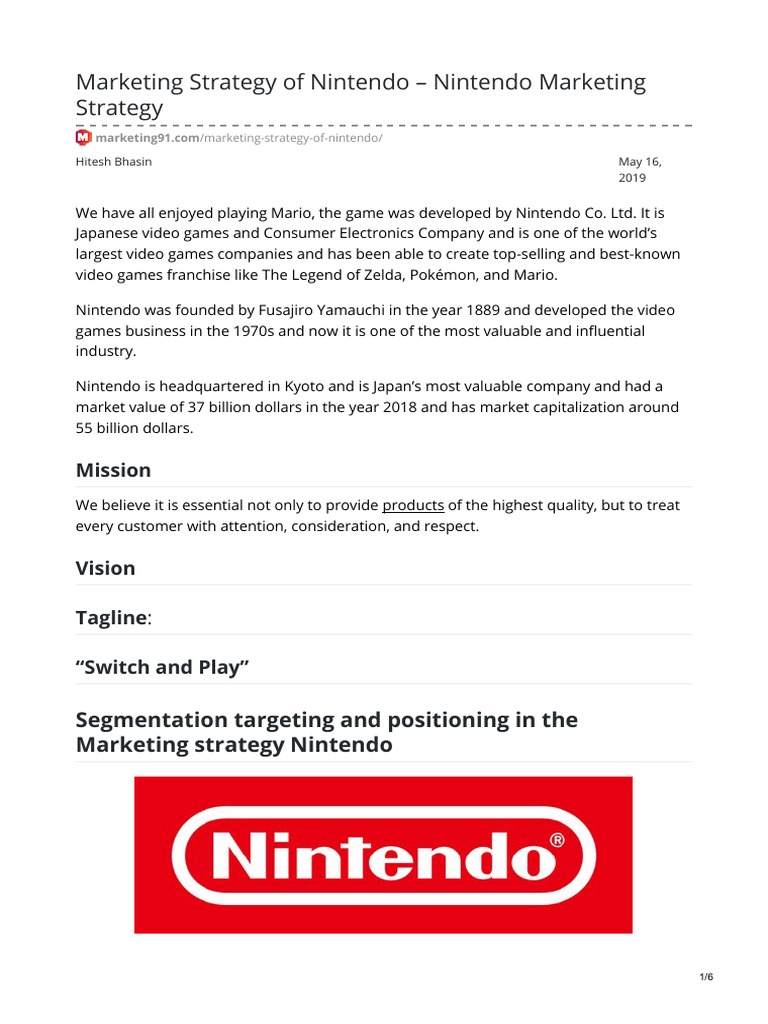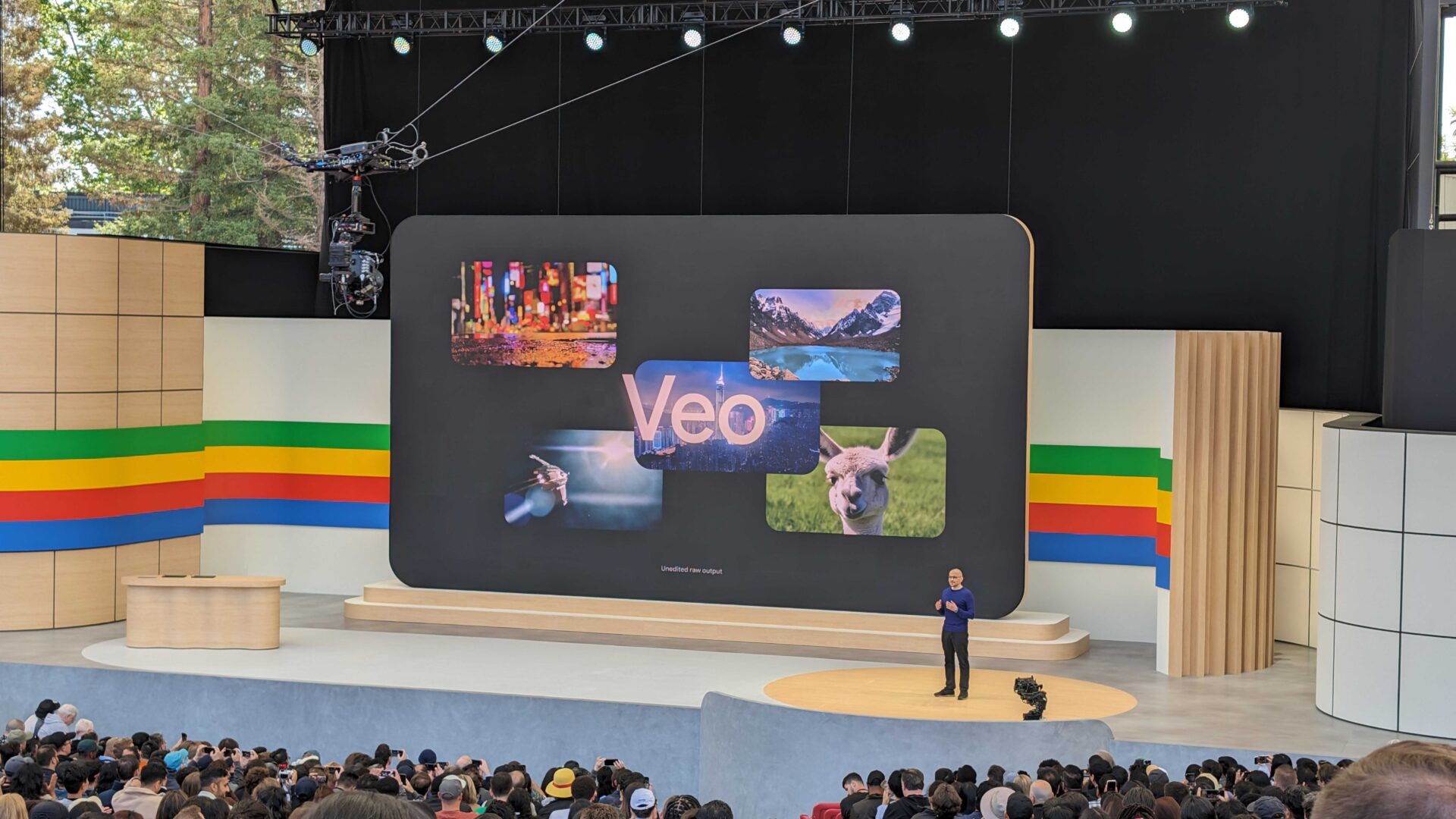Exploring Nintendo's Risk-Averse Strategy In A Changing Market

Table of Contents
The Strengths of Nintendo's Conservative Approach
Nintendo's success isn't accidental. Their risk-averse strategy has several key strengths:
Brand Loyalty and Established Franchises
Nintendo boasts incredibly strong brand recognition and loyalty, built over decades of delivering high-quality games featuring beloved characters. This established foundation provides a significant competitive advantage.
- Consistent release of beloved sequels generates predictable sales: The annual release of new Pokémon games, the consistent evolution of The Legend of Zelda series, and the ever-present Mario franchise provide a steady stream of revenue.
- Lower marketing costs due to pre-existing brand awareness: The immense recognition of Nintendo characters and franchises means less money needs to be spent on marketing campaigns compared to newer entrants in the market.
- Reduced risk of failure with familiar formulas: Sticking to well-established gameplay mechanics and character designs minimizes the risk of releasing a flop. Fans know what to expect and are more likely to purchase games featuring familiar elements.
Focus on Family-Friendly Gaming
While some may see this as limiting, Nintendo's focus on family-friendly gaming has allowed them to tap into a broad demographic largely untouched by more mature-focused competitors.
- Appeals to a wider audience beyond core gamers: Nintendo games often appeal to casual gamers, families, and younger audiences, significantly expanding their potential customer base.
- Stronger parental buy-in for purchasing games: Parents are more comfortable purchasing Nintendo games for their children, knowing the content is generally appropriate and age-suitable.
- Creates a positive brand image: Nintendo cultivates a family-friendly and positive brand image, further enhancing its appeal to a broader market.
Hardware-Software Synergy
Nintendo's tight control over both its hardware and software allows for optimized gameplay and experiences tailored specifically to its consoles.
- First-party titles are often designed to showcase the console’s unique capabilities: Games like Super Mario Odyssey and The Legend of Zelda: Breath of the Wild were designed to highlight the Nintendo Switch's innovative hybrid nature.
- Encourages hardware sales: The appeal of exclusive, high-quality first-party titles drives sales of Nintendo's consoles, creating a powerful synergy.
- Creates a more integrated ecosystem: This control allows for seamless integration between hardware and software, creating a more cohesive and enjoyable gaming experience.
The Challenges of Risk Aversion in a Dynamic Market
Despite its strengths, Nintendo's risk-averse strategy faces growing challenges in today's rapidly evolving gaming market:
Missed Opportunities in Emerging Genres
Nintendo's reluctance to fully embrace certain genres presents potential limitations.
- Competitors are innovating and capturing market share in these areas: The battle royale genre, for instance, has seen massive success with games like Fortnite and Apex Legends, leaving Nintendo comparatively underserved.
- Potential to attract new player demographics: Expanding into new genres could attract new players and broaden Nintendo's appeal to a younger and more diverse audience.
- Risk of being perceived as outdated: Sticking solely to established genres risks alienating players seeking innovative gameplay experiences.
Competition from Mobile and AAA Publishers
The rise of mobile gaming and powerful AAA titles from competitors like Sony and Microsoft poses a considerable threat.
- Increased competition for consumer spending: Players have more choices than ever, making it harder for Nintendo to maintain its market share.
- Pressure to innovate and keep up with technological advancements: Nintendo needs to constantly innovate to stay relevant and compete with advanced graphics and online features offered by competitors.
- Potential for market share erosion: Failure to adapt and innovate could lead to a decline in Nintendo's market share and influence.
Limited Third-Party Support
Nintendo's relatively closed ecosystem can hinder third-party developer participation.
- Smaller selection of games compared to competitors: The Nintendo Switch, while successful, offers a smaller library of third-party games compared to the PlayStation or Xbox.
- Potential for reduced player engagement: A smaller game library could reduce overall player engagement and playtime.
- Limits opportunities for cross-platform play: The lack of extensive cross-platform support can limit player interaction and community building.
Balancing Risk and Reward: A Path Forward for Nintendo
To maintain its position in the competitive gaming landscape, Nintendo needs to strike a balance between its risk-averse strategy and strategic innovation:
Strategic Risk-Taking in Specific Areas
Nintendo should consider carefully measured expansions into emerging genres, cautiously incorporating popular features while retaining its core brand identity. This involves calculated risks, not abandoning its strengths.
Enhancing Online Services and Community Engagement
Improving its online infrastructure and fostering a stronger online community are crucial for increasing player engagement and loyalty. Features that encourage interaction and competition are vital.
Leveraging Mobile Gaming Strategically
Continuing to utilize mobile platforms for increased brand visibility and reaching new audiences is important. However, this should be done without compromising the core console experience, which remains Nintendo’s primary focus.
Conclusion
Nintendo's risk-averse strategy has been a cornerstone of its success, building a powerful brand and a loyal fanbase. However, the evolving gaming landscape demands a more nuanced approach. While preserving its strengths, Nintendo must strategically incorporate calculated risks to remain competitive. By embracing selective innovation, enhancing online services, and strategically leveraging mobile platforms, Nintendo can unlock new avenues for growth and solidify its position as a leading force in the dynamic gaming market. To stay informed about Nintendo's strategic choices and the continuing discussion on its business model, keep exploring analyses of Nintendo's risk-averse strategy and its future adaptations.

Featured Posts
-
 Exploring The Capabilities And Limitations Of Googles Veo 3 Ai Video Generator
May 28, 2025
Exploring The Capabilities And Limitations Of Googles Veo 3 Ai Video Generator
May 28, 2025 -
 5 Smartphones Longue Autonomie Avis Et Comparatif
May 28, 2025
5 Smartphones Longue Autonomie Avis Et Comparatif
May 28, 2025 -
 Aprils Rainfall A Look At The Data So Far
May 28, 2025
Aprils Rainfall A Look At The Data So Far
May 28, 2025 -
 Sinner Plans Hamburg Tournament Following Doping Ban
May 28, 2025
Sinner Plans Hamburg Tournament Following Doping Ban
May 28, 2025 -
 American Music Awards 2024 Jennifer Lopez Set To Host In May
May 28, 2025
American Music Awards 2024 Jennifer Lopez Set To Host In May
May 28, 2025
